- Home
- Scott Turow
The Last Trial Page 14
The Last Trial Read online
Page 14
Robb’s brow is knotted as she assesses the question.
“Touché,” she says at last.
“I’m not fencing with you, Doctor.”
“I understand. I guess what you’re saying is more or less right.”
“By the way, Dr. Robb, do you know how many of the CEOs of companies who failed to report adverse events accurately were prosecuted?”
“Objection,” says Moses, and Sonny sustains him quickly. The fact someone else got away with bad behavior has no bearing on the guilt of the defendant.
“But the point, Dr. Robb, in terms of your testimony today, is that your opinion that you would not support approval of g-Livia—that opinion is not based on any reporting failure?”
“Asked and answered,” says Moses.
“The question is a little different, but I think we all have gotten the point, Ms. Stern. All that matters for approval is whether g-Livia is safe and effective. Please move ahead.”
As is typical in many white-collar cases, the Sterns are trying to conduct a defense reminiscent of the old joke about the man who gets sued after his dog bites a neighbor. At trial, the man offers three defenses: (1) I always keep my dog on a chain. He couldn’t have bitten my neighbor. (2) My dog is very old and has no teeth. He couldn’t have bitten my neighbor. (3) I don’t have a dog.
Stern hopes that at the end of the case the evidence will allow them to argue that Kiril never asked Wendy Hoh to alter the trial data. But if the jury concludes otherwise, the Sterns want to be able to say the alteration didn’t matter anyway, that it wasn’t ‘material’ in the word of the law. And Marta is moving methodically toward this goal by getting Robb to agree that neither lying in itself nor failing to follow the letter of regulations are determinative in deciding whether g-Livia meets the FDA standard.
“And with regard to safe and effective, how does the FDA define ‘safe’?” Marta asks.
“Well, we approve a drug based on a determination that its benefits outweigh the known and potential risks to the intended patient population.”
“So even if a medication in fact kills a certain number of patients, it can still be safe enough for FDA approval?”
“In theory.”
“In fact, isn’t it? Your center and your companion centers on biologics and devices approve items for the market, knowing that there is a strong probability that someone will die, do they not?” Not incidentally, Marta is repeating the ‘strong probability’ language of the murder statute.
“And many more lives will be saved. But yes.”
“Now, in the course of preparing for your testimony, Dr. Robb, were you allowed to review a transcript of the testimony that Dr. Bruno Kapech gave in this case?”
Moses objects to ‘allowed.’ The normal rule that witnesses should be isolated from what others have said in court does not apply to experts. Sonny instead directs Marta to rephrase, and Robb says she is not aware of what Kapech told the jury.
“Are you familiar with Dr. Kapech’s reputation as an oncological epidemiologist?”
“Very much so.”
“A renowned figure in this area?”
“No question.”
“Now, in order to discuss your opinions, I’m going to show you part of the transcript of Dr. Kapech’s testimony. Do you see that?” After a few more preliminaries, two typed transcript pages go up on the monitor.
“Dr. Kapech told all of us that somewhere between twenty-five and thirty percent of patients with stage two non–small-cell lung cancer will die of their cancer in less than fourteen months.”
“Okay,” says Robb.
“Now I want to go back to Pafko Computer-A, which is the g-Livia trial database as it existed on September 15, 2016.” Pinky puts it back on the screen. “That’s seventeen months after the study began, right?”
Robb nods and the judge tells her to answer out loud. She says yes.
“We haven’t talked much about the other arm of that trial, involving the chemo that was the standard of care, which g-Livia was being compared to. Do you recall what the fatality rate was in the other arm?”
Moses objects that the results of the other side of the g-Livia clinical trial are irrelevant, but Sonny overrules him. The rules of evidence always allow the remainder of a document to be received if a portion has been shown to the jury.
“I knew once. My memory is that the g-Livia numbers were significantly better. My guess is that on the other arm, the mortality rate exceeded twenty percent.”
“Well, let’s not guess,” says Marta. She then introduces the other portion of the database, which shows that forty-nine of the patients who began the study had died at that point in time. Given the fact that eight subjects had withdrawn from that arm—a routine occurrence, Robb agrees—a tad more than 25 percent of the patients receiving the standard treatment had passed away at that point in time.
“Now, by contrast, Pafko Computer-A shows that six percent of the patients in the study died of this sudden onset phenomenon, correct?”
“Yes.”
“But only another five percent of the patients had died of reasons seemingly related to their cancer.”
Robb hesitates, which allows Marta to take her through the database line by line. After a good five minutes of that, Robb agrees that five percent—ten patients—appear to have died of cancer-related causes.
“So at that time, roughly seventeen months into the study, eleven percent of the patients on g-Livia had died versus more than twenty-five percent receiving the standard treatment. Correct?”
“That’s what the numbers show.”
“Which would mean g-Livia was ‘safe,’ as you explained the safe-and-effective standard?”
Robb is smiling, as if Marta is a naughty child. The doctor looks up to Sonny.
“May I explain?”
“Answer the question, please, Dr. Robb.”
“Yes, if the world stopped turning at seventeen months, g-Livia was safer than the standard therapy.”
“Even including these sudden deaths?”
“Yes, but those deaths began after about thirteen months of treatment with g-Livia. What no one knows from these numbers is whether, if you continue to administer g-Livia, eighty percent of patients will expire from this sudden death phenomenon within the next year. That is the question that’s raised by those mortalities. And because of that, I couldn’t and can’t say g-Livia is safe.”
“g-Livia couldn’t be deemed safe because you didn’t know what would happen over time?”
“And because I didn’t know what the cause of death was. These patients were dying mysteriously. Most of the investigators had listed MI, myocardial infarction—”
“Heart attack?”
“Heart attack as the cause of death, because they saw these cases in isolation. But once you realize it’s a wider-spread problem, there are many other possibilites that must be investigated. Cancer patients all take a lot of drugs, so it might have been a fatal interaction between medications. There might be a manufacturing issue with g-Livia. If you gave me time, I could list several more possibilities.”
“But as we sit here today, Doctor—today—a medical consensus has developed that what was causing these deaths is an allergic reaction, right?”
“Generally, yes. The pathologists who have looked at the symptoms are fairly uniform in that conclusion. It is very very unusual for a medication to cause an allergic response only after a year. You’d expect to see manifestations of that in some patients far sooner. So even now, I have questions. There might be something added to the drug—say, an excipient—that’s causing the response. And it could even be, frankly, that g-Livia on its own over time causes a fundamental change in body chemistry that leads to that allergic reaction.”
“But from a safety perspective, Dr. Robb, what you assess is not why there is an allergic response, but whether it can be contained, correct?”
“Well, one usually goes with the other, but in general I’d say that is
true.”
“Dr. Robb, has the FDA approved medications that are known to cause allergic reactions in patients?”
“Of course.”
“Many?”
“Many.”
“Some that can cause reactions that are very severe, even fatal?”
“Okay.”
“And in approving the medications, the FDA requires that black box warning you mentioned?”
“Yes.”
“And sometimes you also require something called a REMS, a Risk Evaluation and Mitigation Strategy, that might require that g-Livia could only be administered in certain circumstances? You might say injections can only take place in a hospital setting, and that a patient must remain there for seventy-two hours after the injection?”
“I suppose.”
“Has the FDA done that in the past in the case of medications that might cause an anaphylactic response?”
Robb smiles with faint bitterness.
“I’m sure you have examples at hand, Ms. Stern.”
Marta smiles, too. She has Robb under control.
“But the point, Dr. Robb, is that there are established means to deal with even severe allergic reactions, steps that greatly reduce the possibility of a patient dying?”
“I would say in general that’s true, but we don’t know how effective those measures might be with the reaction g-Livia provokes.”
“But given medical learning, can you say as you sit here that they would be likely to reduce the number of fatal reactions?”
“‘Likely’? Yes. But I’d want to see the results in a trial to be sure.”
“Okay. And the other concern you expressed is not knowing how widespread allergic reactions would become the longer patients took g-Livia. Right?”
“Right.”
“Now what is a confirmatory study?”
“That’s a study a drug sponsor or manufacturer undertakes after we’ve granted accelerated approval. In other words, because accelerated approval takes place after shorter trials, we ask the manufacturer to track a patient population that’s receiving the medication over a longer period.”
“And are you aware that Pafko Therapeutics complied with the FDA’s requirements and carried out a confirmatory study of g-Livia among a thousand patients, including more than a hundred who had been part of the original double-blind trial?”
Moses is already on his feet. He objects to any reference to the confirmatory study. After trying to hash out the matter at sidebar, Sonny has the jury removed. The prosecutors have clearly known that the later study would come up, and they have many arguments about why the judge should preclude any reference to it. It was planned for three years but lasted only twenty-three months until g-Livia was removed from the market. Because of that, the data collected has not been ‘scrubbed,’ as the scientists would put it, to account for statistical anomalies. More important, Moses says, is that the fraud charged in the indictment was complete when Pafko doctored the data and allowed it to be submitted to the FDA, so later developments shouldn’t matter.
In most instances, Moses’s argument would prevail. But Dr. Robb has been allowed to testify as an expert. Her testimony is less circumscribed than a lay witness’s, and therefore her cross-examiner should get more latitude to explore the basis of her expert opinions.
“Dr. Robb,” says Marta, “has repeatedly stated that her judgment that g-Livia is not safe and effective continues to apply today. Accordingly, Dr. Pafko is entitled to challenge that opinion—and her expertise—with any data developed up until this moment.”
After a bit more argument, Sonny agrees with Marta. Moses can raise his questions about the value of the raw data from the confirmatory study on redirect, the judge says.
Dr. Robb is brought back to the courtroom and the summary page for the confirmatory study is illuminated on the screen.
“Dr. Robb, let me remind you that Dr. Kapech told us that twenty-five to thirty percent of patients with stage two non–small-cell lung cancer die by fourteen months. Now, just looking at the raw numbers for the confirmatory study, what percentage of patients on g-Livia, including those who’d died of what we now know are allergic deaths—what percentage had died after twenty-three months?”
“It still appears to be about thirteen percent.” Oddly, the rate of allergic deaths held steady in the confirmatory study. The oncological community is small enough that word of these sudden deaths had spread and some specialists, on their own, had apparently started treating for an allergic response, even without the black-box warning.
“And assuming that statistical scrubbing verified those numbers, is that an important difference?”
“As we look at things in the world of oncology, it’s very significant. Assuming those are accurate numbers, it would be a very important increase in survival rates.”
“And so, Dr. Robb, assuming a successful risk mitigation strategy were in place for allergic reactions, and assuming the data from the confirmatory study was verified by statisticians—assuming all of that, would you still conclude today that g-Livia is not safe and effective?”
Robb takes an unhappy instant to stew.
“I can’t speak for the entire FDA.”
“As we have said before, Dr. Robb, you, not your other colleagues, are on the witness stand. Is it still your expert opinion today that g-Livia is not safe and effective, given the assumptions I’ve stated?”
“That’s a lot to assume. I can assume people stop getting cancer, too.”
Sonny interrupts. “Enough temporizing, Dr. Robb. Ms. Stern is entitled to an answer to her question.” Although Stern wouldn’t have anticipated this, given the Sonny he knows in private, Kiril was right when he observed that she is a little short-tempered in court. After more than twenty years on the bench, her patience for the standard courtroom hijinks, from both lawyers and witnesses, has worn thin, a common condition among long-serving judges. But the scolding from the bench seems again to intimidate Robb. She straightens up, although her face remains dark and troubled.
“Those are large assumptions. But if they were valid, then I guess I would probably hesitate to express the same opinion today. But you know, sitting here, answering hypotheticals, it’s kind of a thought experiment. And what we do, what I do, it’s not imaginary. It’s people’s lives. In practice, if I were answering the question for real, I would need to take a lot more time and look at a number of factors much more carefully than I can just sitting right here.”
Marta stares at Robb across the courtroom, and Stern has to stifle himself from reaching out to hold his daughter back. Robb has done her best to qualify her answer, but within the cascade of words is the critical phrase—‘I would hesitate to express the same opinion today.’ If Marta goes back at Robb again, the doctor is likely to retract some or all of that.
Standing silent, Marta reaches the same conclusion on her own. Having taken a second, she has absorbed the charged air in the courtroom, which suggests that everyone here understands that Robb has made a critical concession. Legally, Moses is right that the jury is still entitled to conclude that Kiril committed a fraud in 2016. But what Robb has acknowledged leaves the people in the jury box to decide whether they are really going to convict a seventy-eight-year-old Nobel Prize winner for fudging the numbers regarding a medication that demonstrably saves lives and which we know today should probably be approved anyway.
Marta returns to the defense table to drop off the pages of the confirmatory study she has been holding. She appears ready to sit down, which might be a good idea, but she raises her hand to make clear she’s not done.
“One more point, Dr. Robb. Now, you say you met with representatives of PT in Washington on several occasions to discuss g-Livia. Between the first meeting in 2014, when PT was first seeking Breakthrough Therapy designation, and the last in October 2016, how many meetings did you take part in, in total?”
“Four, I believe.”
“And was Dr. Kiril Pafko present at any of thos
e four meetings?”
“The first and the last.”
“Who was the principal representative of PT each time?”
“Dr. Lep Pafko.”
“And in October 2016, when the results of the clinical trial were presented to the FDA, who spoke for the company?”
“For the most part? Kiril said a few words, but Dr. Lep Pafko did most of the talking.”
Marta then has Pinky show on the screen the cover page of PT’s marketing application for g-Livia, Government Exhibit-1.
“And this part of the document, the form FDA 356h, has fields thirty to thirty-five, where someone called the Responsible Official certifies that PT has complied with all applicable laws and regulations. Was that certification true?”
“No, not in my view.”
“And the person who made these certifications, that person was Dr. Kiril Pafko, the defendant on trial here, was it not?”
Robb smiles. The signature is right there on the screen.
“No.”
“Who was it, then?”
“Dr. Lep Pafko, the medical director and senior vice president.”
“Dr. Lep?”
Marta pauses to give Dr. Robb a querulous, uncomprehending look, then announces she has nothing further.
Sonny calls for the lunch recess. As soon as the jury is gone, Stern rises to grasp Marta by both shoulders.
“Brilliant,” he tells her. “You have never been better.”
Marta beams, relishing her father’s praise. Pinky and several of the lawyers from the big firms involved in the civil cases, who have been observing from the gallery, gather around to quietly compliment Marta. Stern turns away to leave Marta to her admirers and notices only then that behind Kiril, Donatella has slid forward on the first pew. Her hand is on the back of her husband’s chair, and the look she is giving Stern beneath those thick black eyebrows is forbidding enough to chill his heart. She rises then and leans toward Stern.
“Sandy,” she whispers, in a gentle tone entirely at odds with what Stern just saw from her, “please allow Kiril and me to take you to lunch.”

 Testimony
Testimony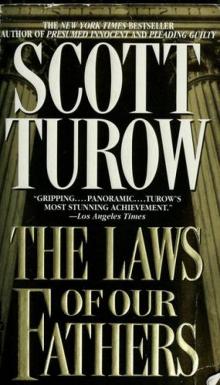 The Laws of Our Fathers
The Laws of Our Fathers Ordinary Heroes
Ordinary Heroes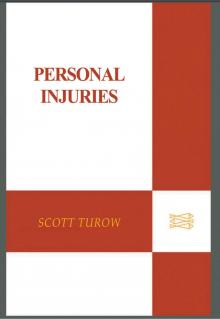 Personal Injuries
Personal Injuries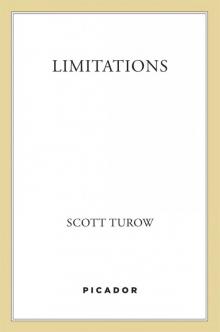 Limitations
Limitations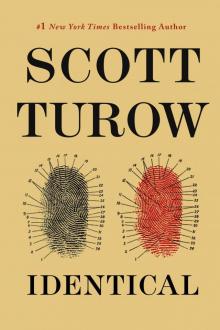 Identical
Identical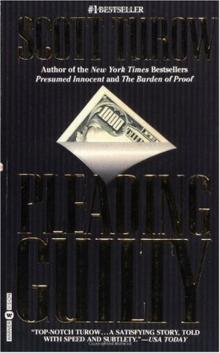 Pleading Guilty
Pleading Guilty Presumed Innocent
Presumed Innocent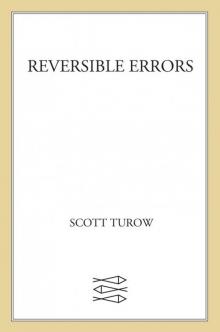 Reversible Errors
Reversible Errors One L: The Turbulent True Story of a First Year at Harvard Law School
One L: The Turbulent True Story of a First Year at Harvard Law School Ultimate Punishment
Ultimate Punishment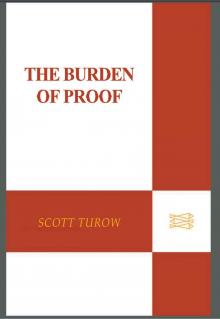 The Burden of Proof
The Burden of Proof Ordinary Heroes (2005)
Ordinary Heroes (2005)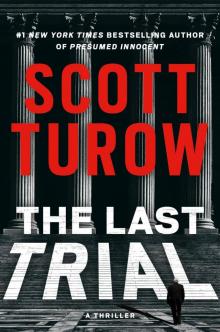 The Last Trial
The Last Trial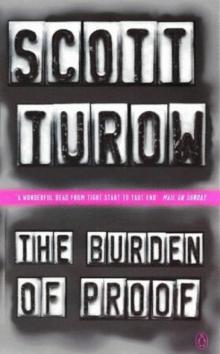 The Burden of Proof kc-2
The Burden of Proof kc-2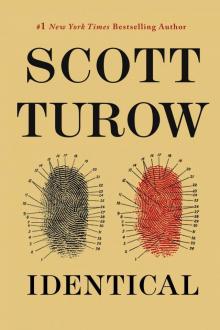 KC09 - Identical
KC09 - Identical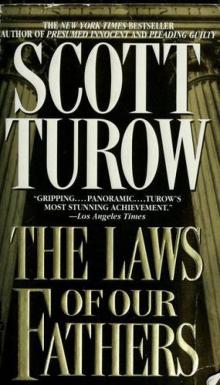 The Laws of our Fathers kc-4
The Laws of our Fathers kc-4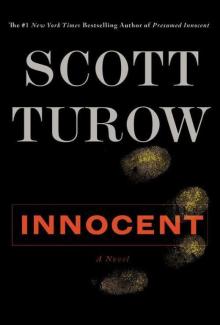 Innocent kc-8
Innocent kc-8 One L
One L Identical kc-9
Identical kc-9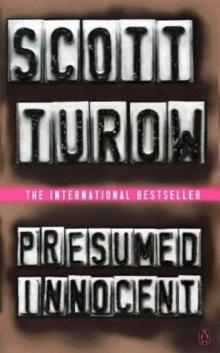 Presumed innocent kc-1
Presumed innocent kc-1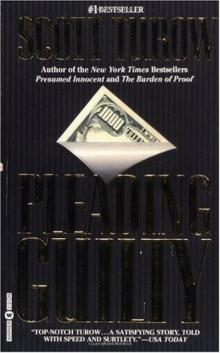 Pleading Guilty kc-3
Pleading Guilty kc-3 One L (1977)
One L (1977)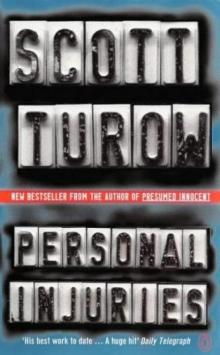 Personal injuries kc-5
Personal injuries kc-5